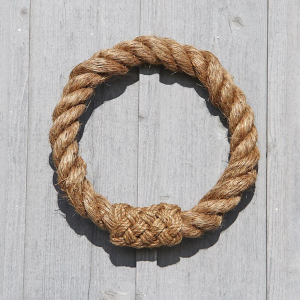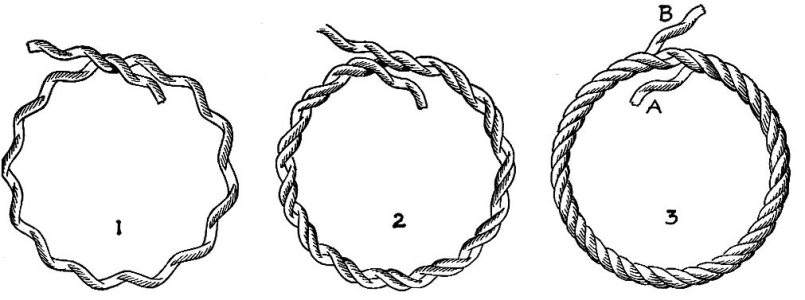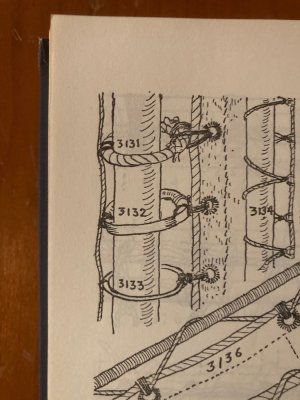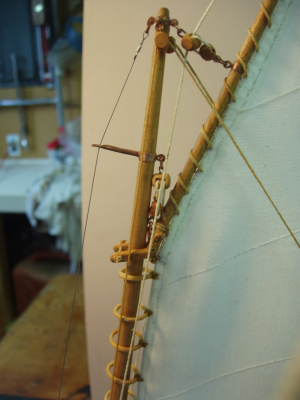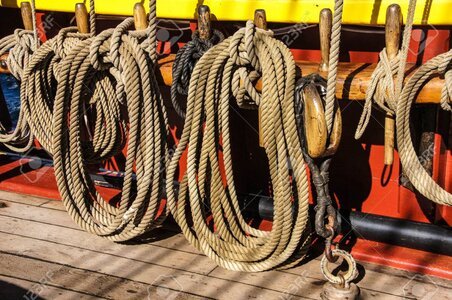Just wondering how folks here attach their sails with brass rings to a mast. I have done this on my OCCRE Albatros build and was not happy with result. There has to be an easier method. The instructions don't have you install these 8mm rings on the mast until after the masts have been constructed and cannot simply be slid onto mast. My method was to open the rings until the opening was big enough to fit around the mast. Then I made holes in the sail cloth and inserted rings in sail so that the gaps in the rings all faced away from the sail. I then slipped all the rings around the mast and crimped them close with pliers. This worked except the rings are no longer round and loose around the mast and cannot be easily moved up or down the mast. Is there a better way to do this? Is there a tool that lets you open and close brass rings while maintaining their shape? I also had problems when attaching sails to a stay with the smaller 3mm brass rings.
Here is a photo of some of the rings. See how some are not closed and they are misshapen. Any ideas on how to do this easier? Thanks.
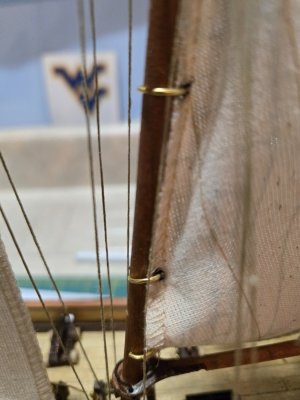
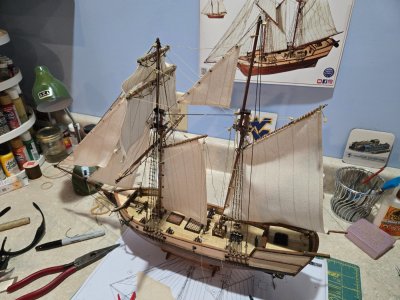
Here is a photo of some of the rings. See how some are not closed and they are misshapen. Any ideas on how to do this easier? Thanks.


Last edited:




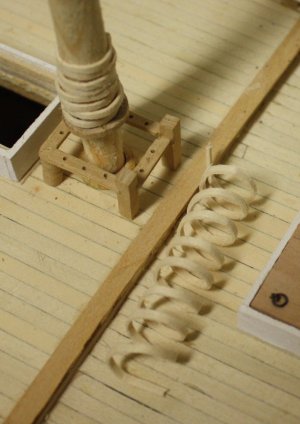


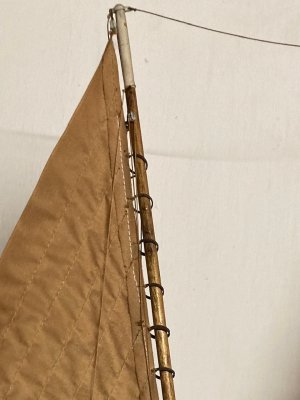

 , Darcy Lever shows them rigged with rope bands (robands)similar to how square sails are bent to the yards. Rope grommets are easy to make but can be tedious work. Metal was never used in the days of sail for attaching sails to masts, yards, or stays, darkened or otherwise. I am guessing metal would not be that noticeable if flattened and used for hoops, but it will not look like rope grommets robands, or lacing. If you do go with metal for the hoops, if you slice off rings from a brass tube they are all the exact same diameter and look great when painted a wood tone. For more on making wooden hoops, there is a short tutorial here at SoS.
, Darcy Lever shows them rigged with rope bands (robands)similar to how square sails are bent to the yards. Rope grommets are easy to make but can be tedious work. Metal was never used in the days of sail for attaching sails to masts, yards, or stays, darkened or otherwise. I am guessing metal would not be that noticeable if flattened and used for hoops, but it will not look like rope grommets robands, or lacing. If you do go with metal for the hoops, if you slice off rings from a brass tube they are all the exact same diameter and look great when painted a wood tone. For more on making wooden hoops, there is a short tutorial here at SoS. 